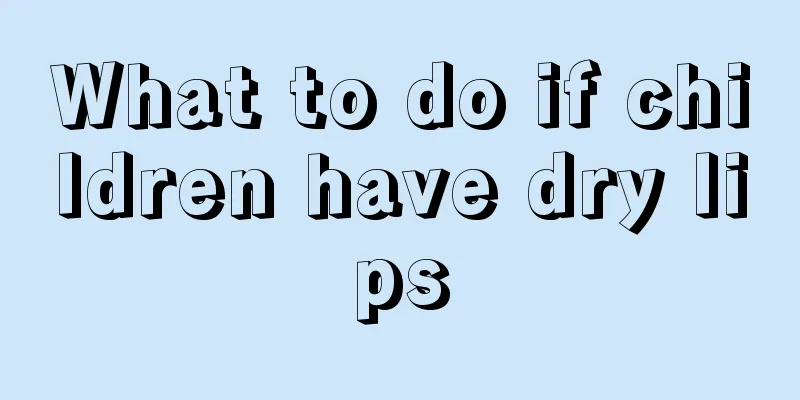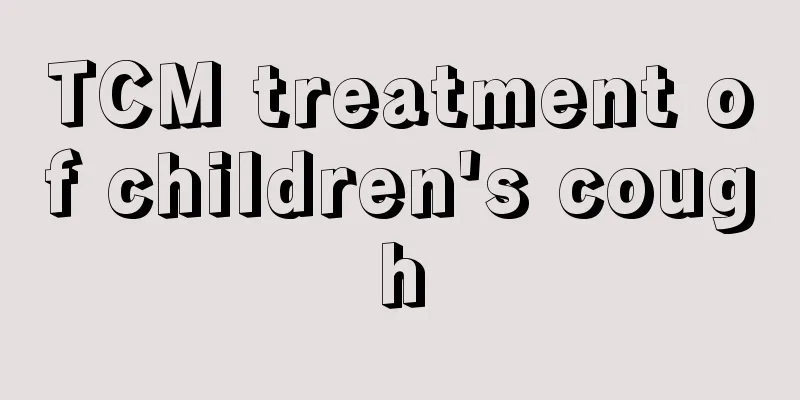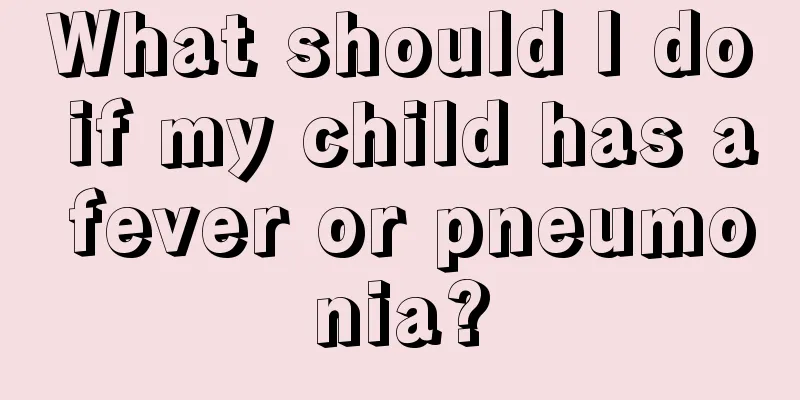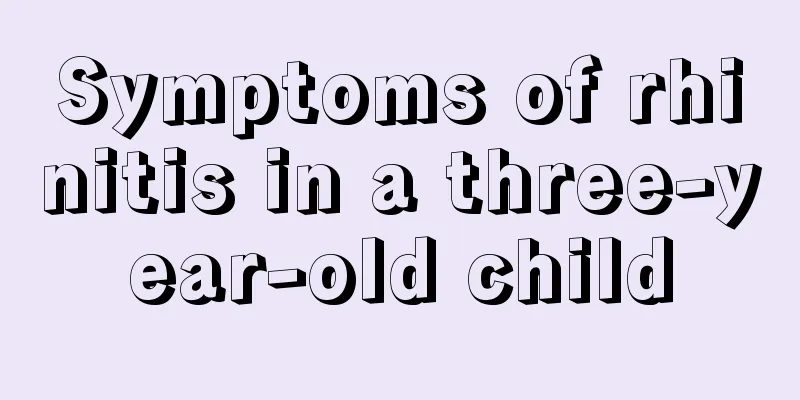What should I do if my five-month-old baby has a fever of 38 degrees?
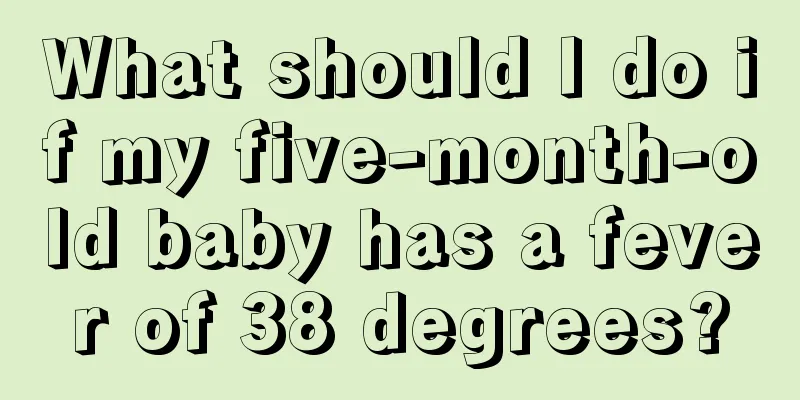
|
Babies have very low resistance and are very likely to get sick after being infected by a virus. Fever is one of the most common diseases. When reducing the patient's fever, you should choose the method based on the temperature. A five-month-old baby with a fever of 38 degrees is considered a low fever, and the patient can undergo physical cooling. So what should you do if a five-month-old baby has a fever of 38 degrees? At the same time, you should also pay attention to daily care, which can help reduce the temperature. Let's learn about it together. The normal body temperature for children is between 36.2℃ and 38℃. A fever is defined as a rectal temperature above 37.8°C, an oral temperature above 37.3°C, and an axillary temperature above 37.2°C. Nowadays, ear thermometers are used more frequently. The temperature measured by ear thermometers is similar to rectal temperature, both of which are called core temperature. When the baby's body temperature reaches the above fever temperature, treatment must be given. Antipyretics can only be taken when the temperature is above 38.5. If the patient's fever is a low fever, physical cooling can be used. Hold the Fengchi, push the Kan Gong, rub the Taiyang, and open the Tianmen for the baby. These are all antipyretic methods. Antipyretic is the key. Patients can use the following gentle (physical) fever-reducing methods to make their babies more comfortable: 1. Cold compress: This method is simple and easy. Apply a cold towel to the forehead. After the towel becomes hot, soak it in cold water and apply it again. Using a cold water bag or ice pack is more effective than applying a cold towel to the forehead. 2. Wipe the whole body with warm water or take a bath: Undress the baby, rub the whole body with a towel in warm water (about 37℃) or take a bath. This can dilate the blood vessels in the baby's skin and dissipate body qi; in addition, when water vapor evaporates from the body surface, it will also absorb body heat. Take a bath for about 10 to 15 minutes each time, about once every 4 to 6 hours. 3. Wipe with a cool towel: Use a slightly cool towel (about 25 degrees) to wipe your forehead and face. 4. Drink more water: It helps sweating. In addition, water has the function of regulating temperature, which can lower body temperature and replenish water lost in the body. There are many types of antipyretics, which are usually taken only when the body temperature reaches 38.5°C or above, and there must be a 4 to 6 hour interval between each dose. Antipyretics include liquids, tablets, suppositories and injections. While reducing the patient's fever, you should also pay attention to daily care, as follows: 1. Maintain air circulation in the home: If the home has air conditioning, maintain the room temperature between 25-27℃. You can place the child in an air-conditioned room or blow an electric fan around him to slowly lower his body temperature, which will make the child feel more comfortable. But if the limbs are cold and the patient is shivering violently, it means that the patient needs warmth, so he should be covered with a blanket. 2. Take off too many clothes: If the baby's limbs and hands and feet are warm and the whole body is sweating, it means that the baby needs to dissipate heat, so he can wear fewer clothes. 3. Warm water bath: Undress the baby and rub the whole body with a warm water (37℃) towel. This will dilate the blood vessels in the baby's skin and release body qi. In addition, when water vapor evaporates from the body surface, it will also absorb body heat. 4. Drink more water to help sweating and prevent dehydration. Water has the function of regulating temperature, which can lower body temperature and replenish water lost in the baby's body. When a five-month-old baby has a fever of 38 degrees, he will cry, be restless, and eat very little. Parents should not be anxious. As long as the correct fever-reducing measures are taken, the body temperature will drop quickly, but parents should pay attention to observe the body temperature to prevent recurrence. Many children will have repeated fevers, so parents must pay attention to it. At the same time, they should also observe whether the body temperature rises to prevent sudden high fever, that is, a fever above 38.5 degrees is called a high fever. These must be treated with antipyretics, otherwise the child's brain will be burned, and the harm caused will be very serious. |
<<: How to take care of a child's slow growing hair?
>>: How to prevent children from getting fever easily
Recommend
Red pimples on baby's face
We must pay enough attention to the phenomenon of...
Can babies swim? Is swimming good for babies?
Newborn swimming is a health care activity mainly...
What is the best food for babies with thalassemia?
Thalassemia is related to genetics. Most children...
Why is the skin peeling off the fingers of a three-year-old baby?
What's going on with the peeling skin on the ...
What should I do if my two-year-old baby always has a runny nose?
Many children have runny noses, which makes many ...
Why does the child look bad?
For those who have given birth, everyone knows th...
Can babies with inflammation take Austar?
When the baby has inflammation, you must be caref...
Can a one year old eat peaches?
A one-year-old baby should have been weaned, and ...
What is the reason for the baby to have a mole
Everyone wants a flawless facial skin, without ac...
What to do if your child has rhinitis and nasal congestion
Generally, babies will have very obvious symptoms...
What are the dangers of eating ice cream for children?
Children all love to eat ice cream, but eating to...
Methods to improve baby's cold, cough and phlegm
Cold and cough are very common. Cold can easily c...
What are the symptoms of precocious puberty?
If we talk about precocious puberty, in the past ...
Why does the child cry non-stop in the middle of the night?
Sometimes it is really hard to stop a baby from c...
What are the symptoms of urticaria in children?
If children suffer from urticaria, it is mostly r...


